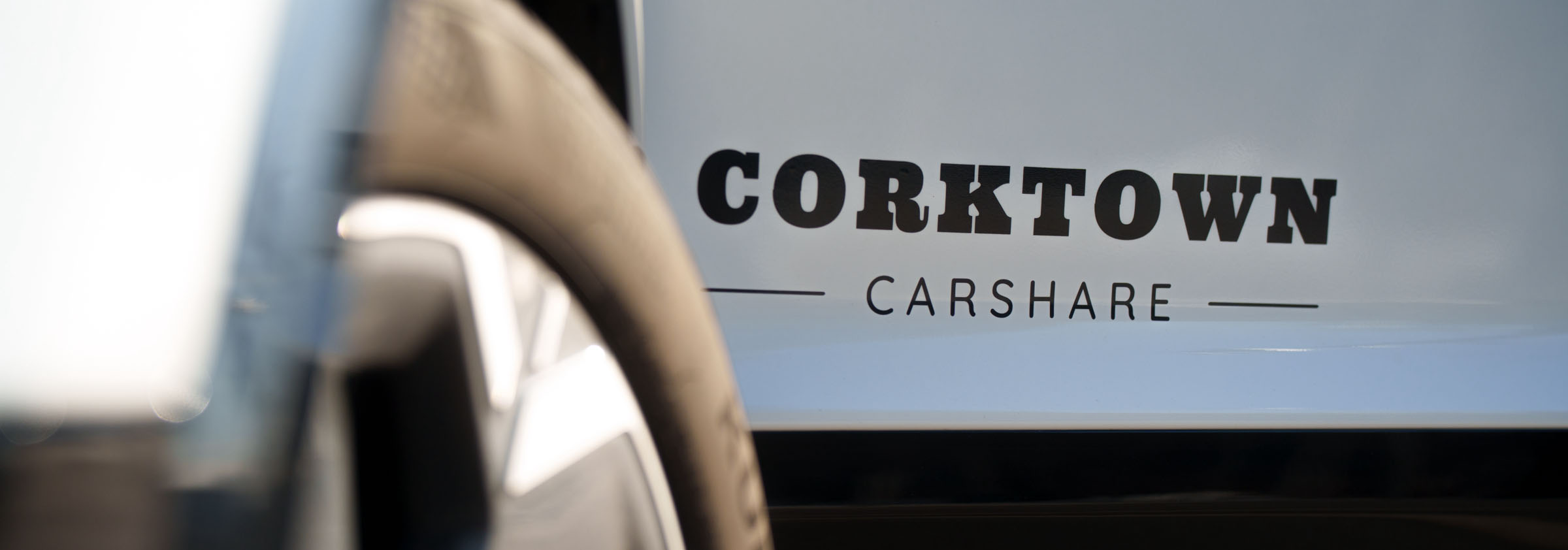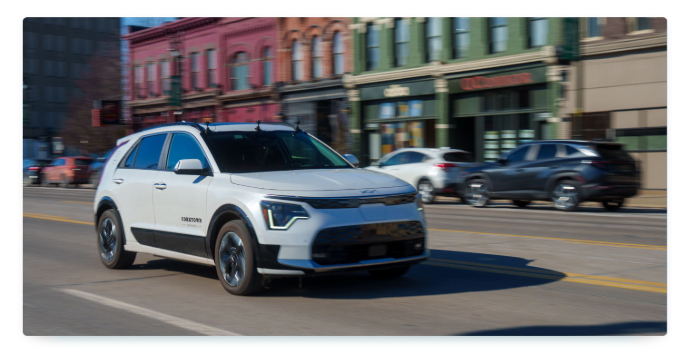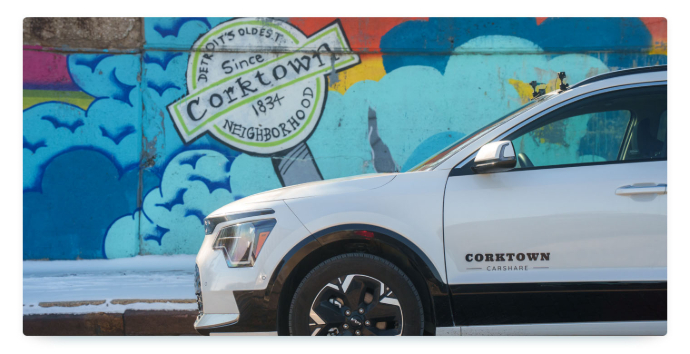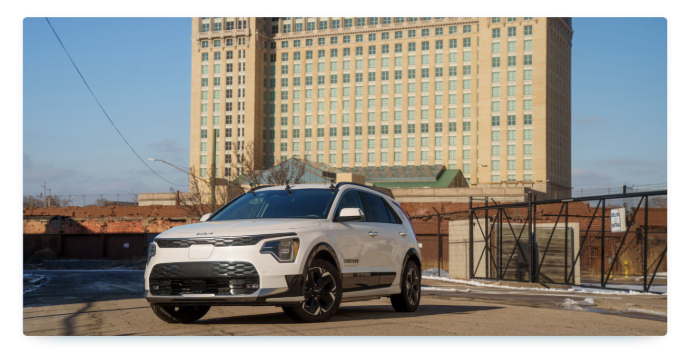
5 min read • June 17, 2025
In a pilot project in Detroit, the US carsharing provider Sway Mobility is turning to remote driving for the first time. Drivers use the app to select the right vehicle from all those available, which is then teleoperated to the station. The aim is to make carsharing as convenient as possible - and for providers to benefit from higher capacity utilization and reduced costs at the same time.
Best Practice

Sway Mobility designs, implements and operates carsharing networks for electric vehicles for customers in the USA. Customers include real estate developers, NGOs, municipalities and universities. The mission: to make electric mobility more accessible to the general public.
Usually, carsharing users can only choose from the vehicles available at nearby stations and are dependent on the charging status of these (electric) vehicles. With the help of teleoperated driving, they can now choose from all of the provider's available vehicles and always receive a vehicle with a sufficient charge level.

Remote driving, or teleoperated driving, is basically driving by remote control: it does not eliminate the driver, but simply transfers him or her to a location outside the vehicle.
This is made possible by a combination of cameras, sensors and an internet connection. The remote controller, often referred to as the operator, has a simulator-like cockpit with a steering wheel and pedals. Screens display live images of the vehicle and its surroundings as well as key vehicle data, speed and geo-location information.
In general, any vehicle can be equipped with the appropriate hardware to be controlled remotely. It is important to distinguish this from autonomous driving: Even if the operator is not on board, remote driving is not autonomous driving. A human is still responsible at all times, with full control over the vehicle. In the unlikely event that the internet connection is interrupted, safety systems ensure that the vehicle comes to a safe stop at the side of the road.
About autonomous driving and possible effects on the carsharing industry →

As a provider, Sway Mobility expects considerable advantages from this business model - in particular higher vehicle utilization and lower operating costs.
As a sharing provider in the USA, Sway Mobility is confronted with the fact that the population density is significantly lower than in Europe, for example, and the distances to be covered are greater. This makes it more challenging to position stations close to as many people's homes as possible and to ensure that the e-cars are always sufficiently charged.
"With teleoperation you can take the car to where there is demand at any time rather than leave it in an underutilized location."
Michael Peters
CEO at Sway Mobility
However, if the vehicles can now be teleoperated to the station, not all offered vehicle types need to be available at several locations. This means that fewer vehicles are needed overall to serve a constant number of bookings - and thus leads to higher utilization of the available cars.
It is also easier to bring e-vehicles with a low charge level to a charging station in good time without having to install multiple charging points. This saves costs and effort and is accompanied by more efficient operational processes, also with regard to maintenance and cleaning.
The advantages for providers at a glance

In addition to classic carsharing technology, such as a telematics unit installed in the vehicle and booking software, further technology is required for teleoperated driving.
At Sway Mobility, this includes the following:
For this, the provider is cooperating with Mapless AI. While Sway Mobility procures the vehicles and takes care of carsharing operations, Mapless AI supplies the remote driving hardware and provides the drivers for remote control.
Cooperation with the state and city was also necessary for the pilot in Detroit: the state of Michigan granted a subsidy to promote the project. As Michigan already has regulations in place for autonomous vehicles, including teleoperated driving, Sway only needed approval from the city of Detroit. Within a few weeks, the city established a “Transportation Innovation Zone” within which remote driving can now be used.
Another issue that should not be neglected is that of curb management: what happens if the vehicle is at the desired location but the driver is late? Together with the municipal administration, a regulation must be made as to whether the car may be parked at the curb while waiting.

In principle, there are still major differences in the regulations regarding teleoperated driving in Europe. However, the first remote-controlled vehicles are already on the roads.
A good example of this is Elmo, a provider of remote driving technology from Estonia. Remote-controlled vehicles with Elmo technology are already driving on public roads in Paris, Amsterdam, Berlin, Munich, Hamburg, Helsinki, Zurich and Krakow.
According to Sway Mobility, the risk of remote driving in carsharing lies not in the safety of this new technology, but in the - still - high costs involved. However, CEO Michael Peters assumes that hardware costs will fall significantly in the coming years. The cost for users to book a vehicle via remote driving should then be comparable to the cost of a food delivery.
Another aspect is insurance: So far, there are only a few providers of insurance for teleoperated vehicles, so there is little room for negotiation. Here too, however, it can be assumed that more insurance options will come onto the market as the use of remote driving technology increases.
"We believe teleoperation will fundamentally change the value proposition for carshare in most places and be widely adopted."
Michael Peters
CEO at Sway Mobility

As part of the pilot project, a vehicle, a Kia Niro EV, can currently be booked for 5 dollars per hour (plus tax). The area in which the vehicle can be ordered remotely to the desired location is currently limited to a radius of around 2 kilometers in Corktown, Detroit's oldest neighborhood.
However, Sway Mobility would like to expand the project and add more vehicles before the summer of 2025. In future, the carsharing fleet will include small cars, wheelchair-accessible vehicles and multi-purpose vehicles (MPVs) to cover different mobility needs.
To ensure efficient operations, Sway Mobility plans to set up three centralized depots in the Detroit metropolitan area. The electric vehicles will be able to be charged robotically or wirelessly there.
In addition, the plan for the future is for the vehicles to be driven directly to customers instead of to predefined stations which would result in even more comfort in the user experience.
More about the pilot “Corktown Carshare” →

Remote driving in carsharing is the first step in opening up the sharing industry to autonomous driving - which numerous experts believe will determine the mobility of the future. Through innovative thinking and action, Sway Mobility is taking advantage of the benefits of modern technology solutions at an early stage and is thus taking a pioneering position.